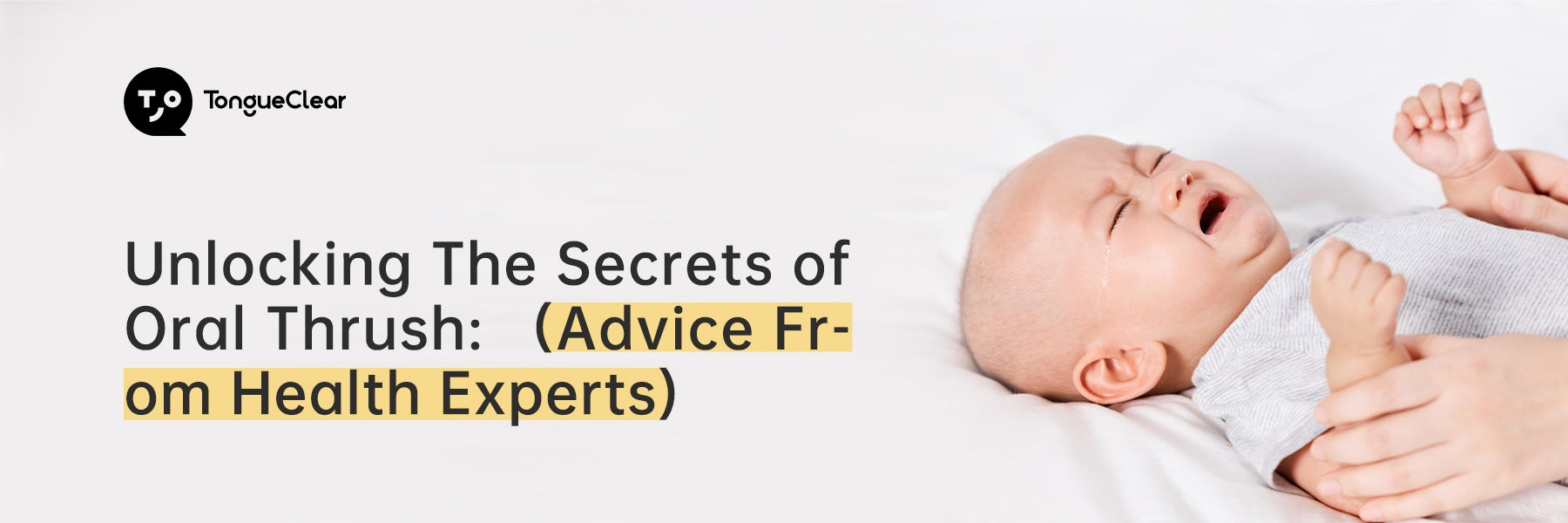
Unlocking the secrets of oral thrush: Advice from health experts
Share

Share
Dental biofilm contains diverse microflora, including bacteria, viruses, fungi, and protozoa.[1] These organisms colonize dental surfaces within a few hours of oral cleaning and subsequently interact with each other.[234] Bacteria initially attach to salivary molecules adsorbed to the tooth surface before multiplying and secreting polymers that provide a matrix or scaffold for biofilm development. Other bacteria and fungi then attach to adherent bacteria to further increase biofilm diversity and complexity.
Dental caries is now understood to be caused by dysbiosis of multiple microorganisms in the oral microbiome rather than a single organism.[8910] The first and predominant initial colonizers of oral biofilm are Streptococci (yellow complex) followed by Actinomyces species (green, blue, or purple).[11]Fusobacterium species (orange) aid complex dental plaque biofilm maturation by bridging other early and late colonizing bacteria (red) in the oral cavity.[12]
Undisturbed biofilms may promote the formation of calculus, demineralization, caries, gingival inflammation, and periodontal disease.[13] Gingivitis affects 50%–90% of the adult population, and 47% of US adults have periodontitis.[14] Therefore, frequent disruption of biofilms is essential in preventing plaque formation.
Many studies have shown that daily dental biofilm disruption by mechanical means (toothbrushing and interdental cleaning) prevents biofilm development and maturation.[15] Although mechanical brushing with toothpaste removes a significant number of bacteria, tongue cleaning further enhances the cleaning effects of brushing, suggesting that tongue cleaning is critical for reducing the bacterial load.[161718] Many organisms on the tongue populate the saliva and then lodge on the tooth surfaces, especially when the flushing of saliva stops during sleep, so tongue cleaning is likely to be desirable in all oral cleaning methods.
Bedtime infant feeding without oral cleansing increases the chances of dental decay.[19] Therefore, after feeding the infant, their gums should be cleaned before bedtime by gently massaging the gum tissues to aid the removal of food particles from the oral cavity.[20] For children under 6 years, toothbrushing should be supervised by parents until the child can brush independently with excellent dexterity and cognition.[21] Moreover, tooth “aches” and injuries related to toothbrush use are common in adults and especially children.[22] The stiffness of the toothbrush affects abrasion,[23] and the application of greater force causes more abrasion. The brushing frequency and brushing technique have a more significant influence on cleaning success than material-oriented toothbrushing factors such as dentifrice abrasivity or bristle stiffness.[24] Therefore, for frequent cleaning, methods that cause minimal abrasion are ideal for oral hygiene, and practices to supplement regular toothbrushing would be highly desirable.[25]
Here we describe a novel oral-cleaning technique, which we term GIFTS (Gum and tooth rubbing with Index Finger and Tongue cleaning and water Swishing). The GIFTS method was initially designed as a control group in ongoing studies, where subjects were asked to use their index finger to reach and rub all parts of their mouth, including their gums and teeth, without a toothbrush, toothpaste, or tooth powder. We found the group that used GIFTS had significantly reduced bacterial counts compared to any of the other methods tested, including in two of the most aggressive dental damaging bacteria (DDB), Streptococcus mutans and Aggregatibacter actinomycetemcomitans.
Many pathogenic bacteria and Candida species adhere to plastic surfaces on brush heads, even after short exposure times.[2627] They then remain in toothbrushes for days or even weeks after brushing.[2829] As contaminated toothbrushes can reintroduce microorganisms into the oral cavity and promote transmission of oral disease and oral infection,[3031] the GIFTS method might be expected to help overcome these problems.
In addition to toothbrushing, swishing water around the mouth after food and drink consumption and between meals could be a safe, economical, and comfortable, but often overlooked way to improve oral hygiene, especially in resource-poor settings.[19] Mechanical disruption of biofilm through regular oral irrigation with waterjets is an effective alternative to manual toothbrushing and dental floss for reducing bleeding and gingival inflammation.[32] However, dental waterjets are expensive and inconvenient for portable use. Nevertheless, vigorous water swishing using the movement of the lips, tongue, and cheeks can be beneficial to oral hygiene.[19] We hypothesized that a simple water swishing step could be added to GIFTS to improve the technique.
The purpose of this study was to examine and compare oral hygiene practices for reducing microbiota in oral biofilm. As most existing research has been conducted on subjects with mature dental plaque,[33] which may not address the impact of dental cleaning on biofilm formation, we examined de novo biofilm on the enamel of healthy children who refrained from oral prophylaxis for several days before practicing different oral cleaning methods. Immature biofilm was then analyzed for microbiome taxa changes.
From 75 volunteers, dentists examined and selected 45 healthy subjects (10–12 years old). They were asked to randomly pick one of the three numbers in a box and were assigned into three equal groups (n= 15). Each group performed one of the three oral cleaning methods in a timed manner [Figure 1]. Each subject was provided with a kit containing sample collection tubes and cleaning materials, where appropriate, such as sodium fluoride–containing toothpaste or nano-charcoal.

Example subheading
Pair text with an image to focus on your chosen product, collection, or blog post. Add details on availability, style, or even provide a review.